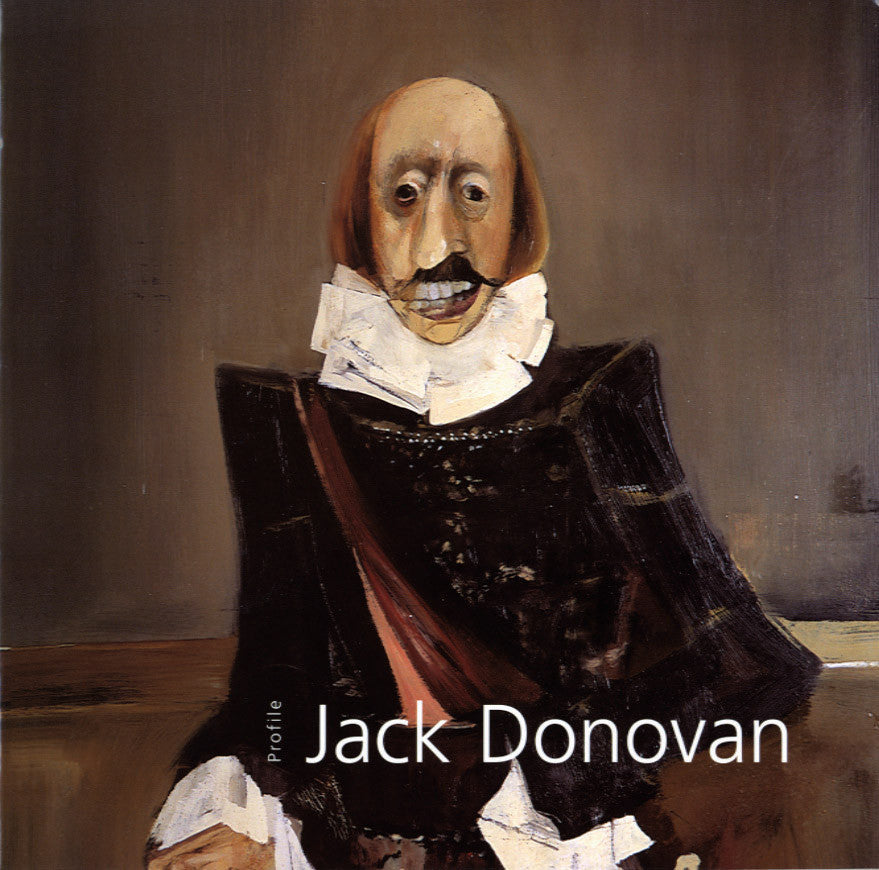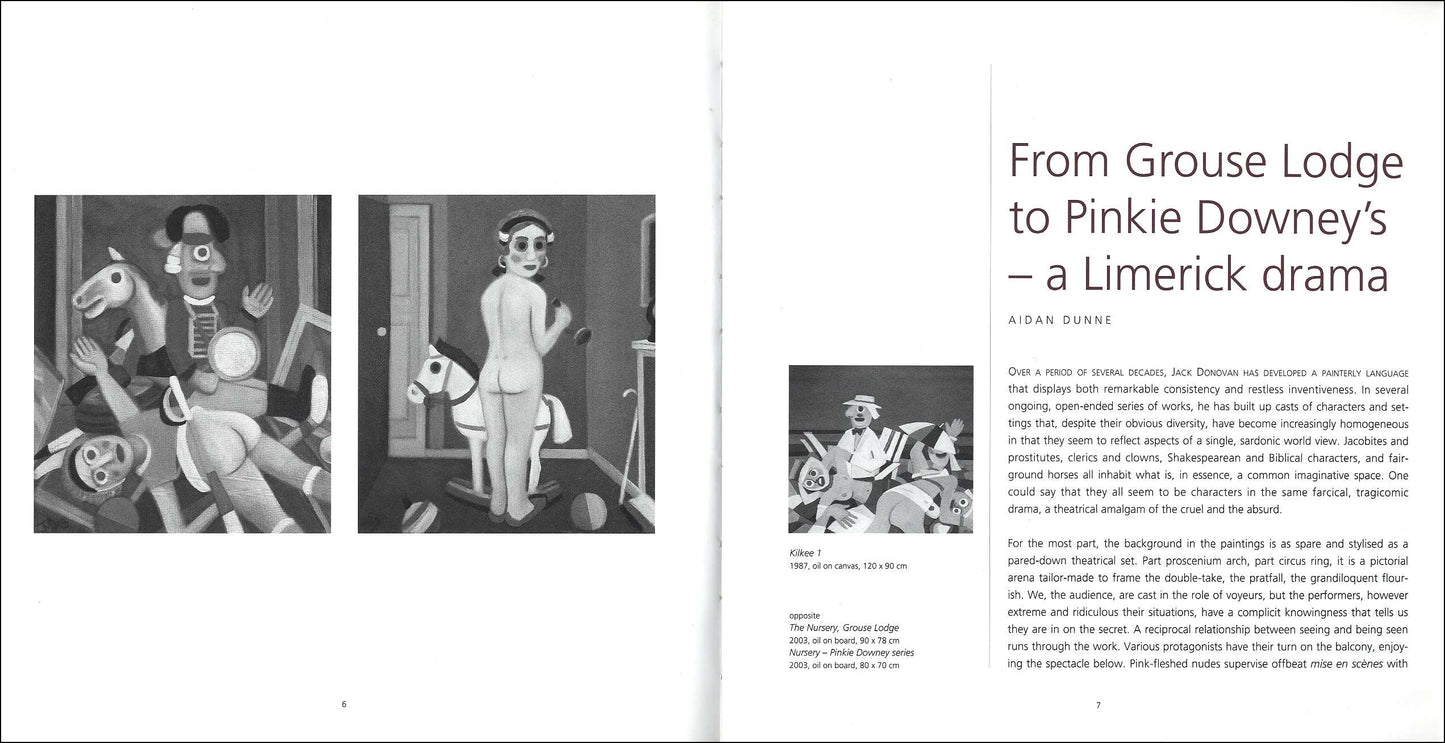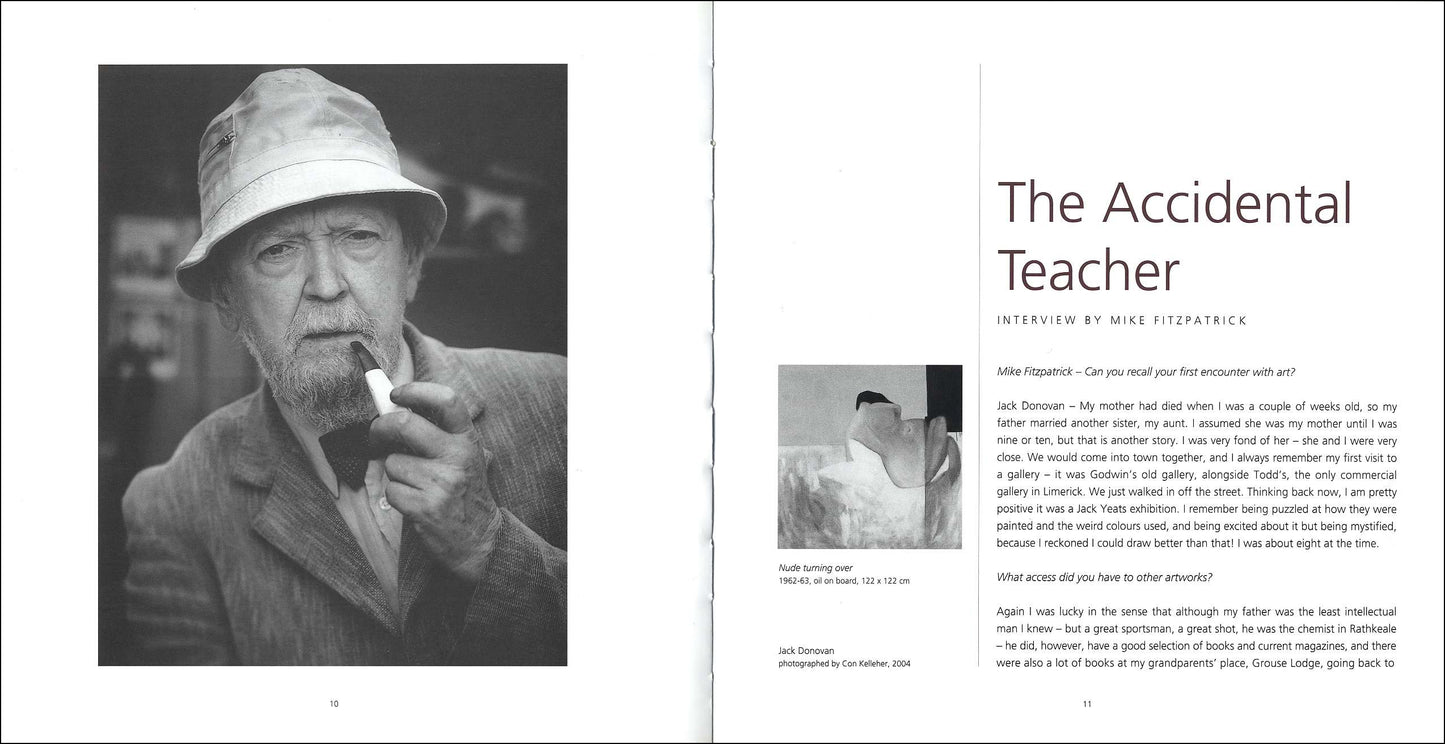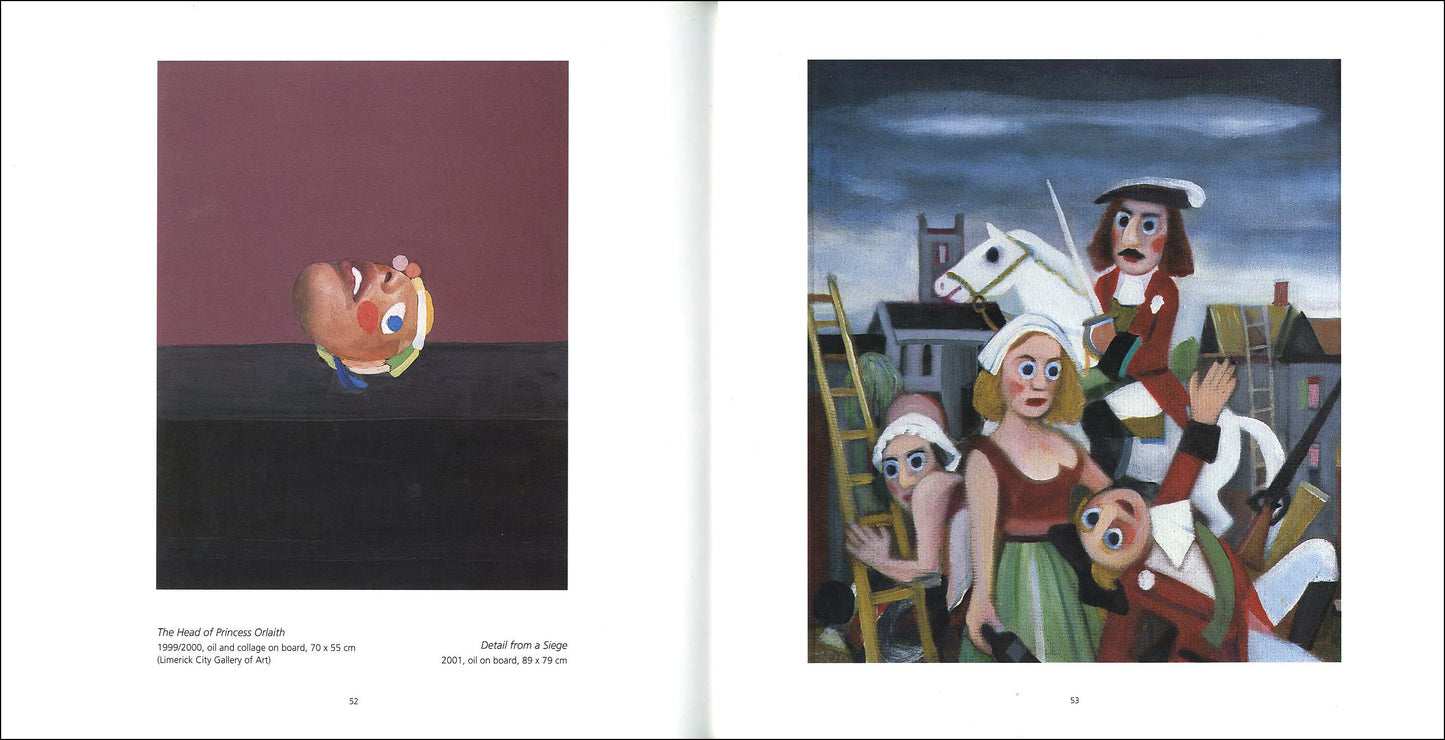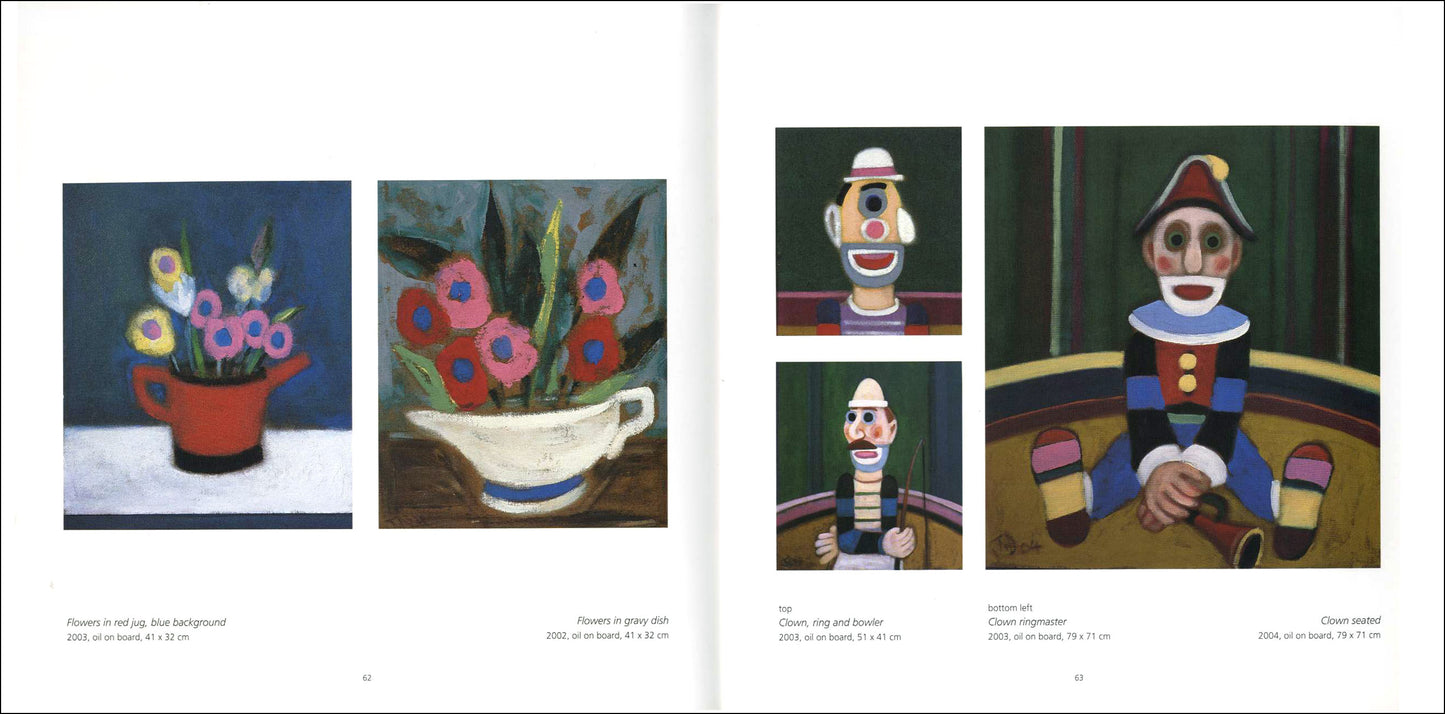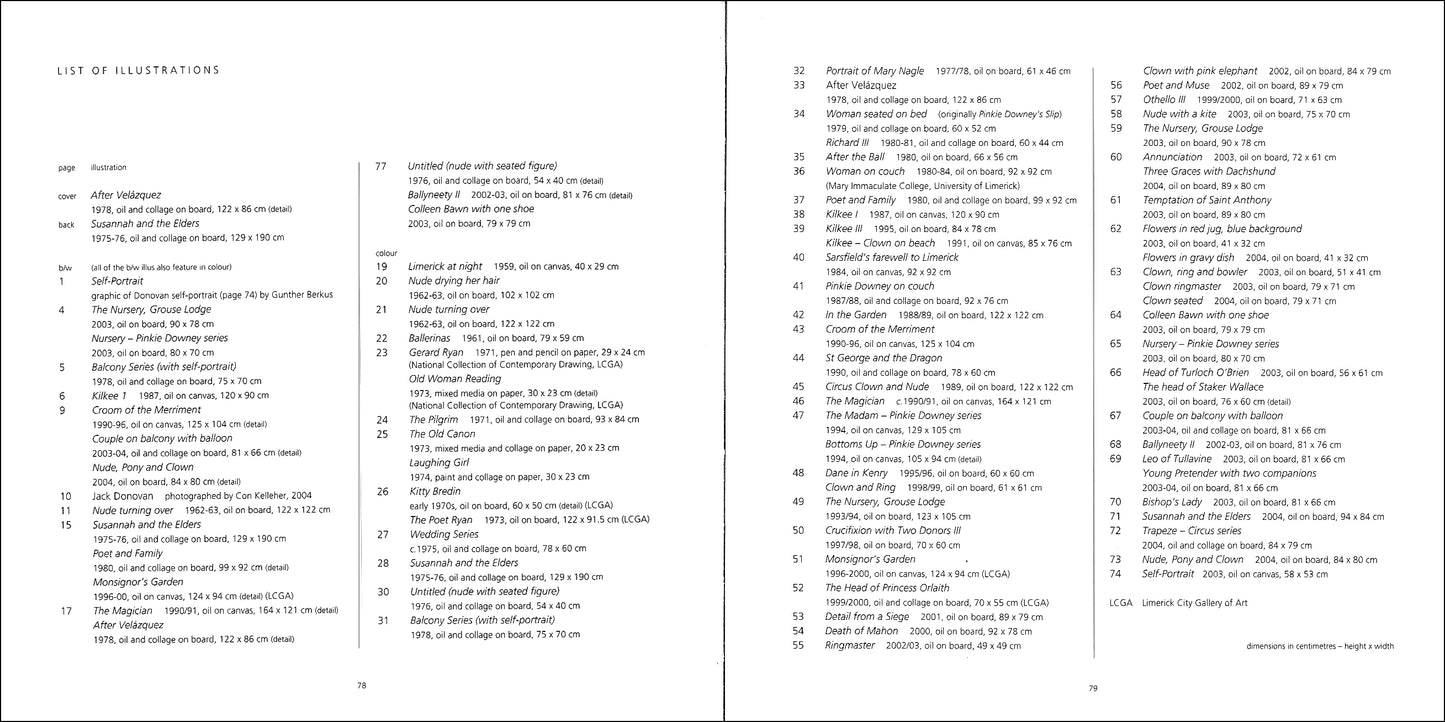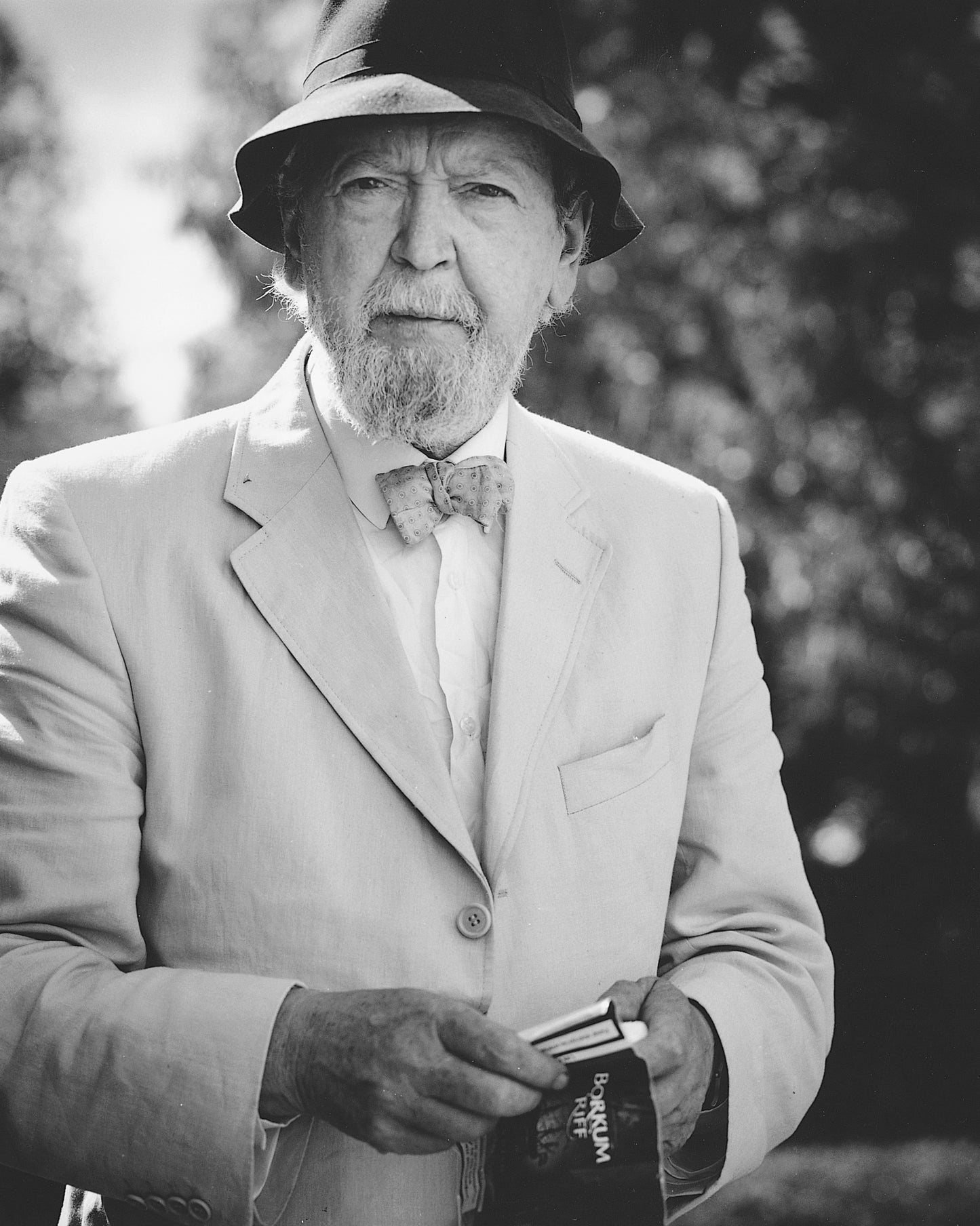Gandon Editions
Profile °19 – JACK DONOVAN
Profile °19 – JACK DONOVAN
Couldn't load pickup availability
Share
essay by Aidan Dunne; interview by Mike Fitzpatrick; intro by Gerry Dukes; afterword by John Shinnors
ISBN 978 0946846 207 84 pages (paperback) 22.5x22.5cm 90 illus
This book is a retrospective look at the work of the painter Jack Donovan. It features and indepth essay and extensive interview with the artist.
EXTRACTS
"Jack Donovan is a true artist because he thinks and acts in paint. What we make of his paintings does not centrally concern him; his business is putting the marks on the canvas. The realm of interpretation he leaves to the spectator, content with the capacity of his paintings to speak for themselves. What they speak of – those great runs of clowns, funfairs and circuses – is happy innocence and simple enjoyment. But again and again the runs are disrupted by images in which innocence is compromised and abused, where the world of nostalgia is assailed by the world of bitter experience. In these disturbing paintings Donovan is never strident; the impassive hand and eye conjoin to record, pace Beckett, how it is on this bitch of an earth."
— from the introduction by Gerry Dukes
"Over a period of several decades, Jack Donovan has developed a painterly language that displays both remarkable consistency and restless inventiveness. In several ongoing, open-ended series of works, he has built up casts of characters and settings that, despite their obvious diversity, have become increasingly homogeneous in that they seem to reflect aspects of a single, sardonic world view. Jacobites and prostitutes, clerics and clowns, Shakespearean and Biblical characters, and fairground horses all inhabit what is, in essence, a common imaginative space. One could say that they all seem to be characters in the same farcical, tragicomic drama, a theatrical amalgam of the cruel and the absurd. For the most part, the background in the paintings is as spare and stylised as a pared-down theatrical set. Part proscenium arch, part circus ring, it is a pictorial arena tailor-made to frame the double-take, the pratfall, the grandiloquent flourish. We, the audience, are cast in the role of voyeurs, but the performers, however extreme and ridiculous their situations, have a complicit knowingness that tells us they are in on the secret. A reciprocal relationship between seeing and being seen runs through the work. Various protagonists have their turn on the balcony, enjoying the spectacle below. Pink-fleshed nudes supervise offbeat mise en scènes with the aplomb of seasoned conjurors’ assistants. Many of the characters are caught up in dramatic vignettes suggesting folly and self-delusion, possessed by lust or zealotry, bound for hubristic ruin. There is a lot of humour, but also a very dark undercurrent."
— from the essay by Aidan Dunne
"I suppose I was always interested in the female nude. I recall once, when I wanted a quick nude for my Pinkie Downey series, I did not want to paint it, and there were some old girlie magazines strewn around the place, so I found a nice reclining nude, and rather than going to the bother of painting, I cut it out and stuck it on. Then I did not like the head of the nude, so I decided to look through another magazine – it could have been Woman’s Own. There was a nicer head, but maybe a little too big for the scale, and it suddenly struck me this scale difference was exciting. It was distorting, but it wasn’t distortion if I could get the balance right. I used collage all through the ‘60s and even into the late ‘70s for that reason. I could do things with this method: I cut up bits of bodies, bits of hands, and used them out of context, and it was exciting for me visually. There was nobody else doing it that particular way. Well, Picasso and Braque had used collage, but in a more formal manner, and that gave me confidence. Suddenly, by my early thirties, I could say that’s a Jack Donovan and nobody else is painting like that."
— Jack Donovan in conversation with Mike Fitzpatrick
|
CONTENTS Jack Donovan’s Dark Simplicities introduction by Gerry Dukes 4-5 From Grouse Lodge to Pinkie Downey’s – A Limerick drama essay by Aidan Dunne 6-9 The Accidental Teacher interview by Mike Fitzpatrick 10-18 COLOUR PLATES 19-74 Donovan – A Question of Balance afterword by John Shinnors 75-77 List of illustrations / Artist’s biography |
